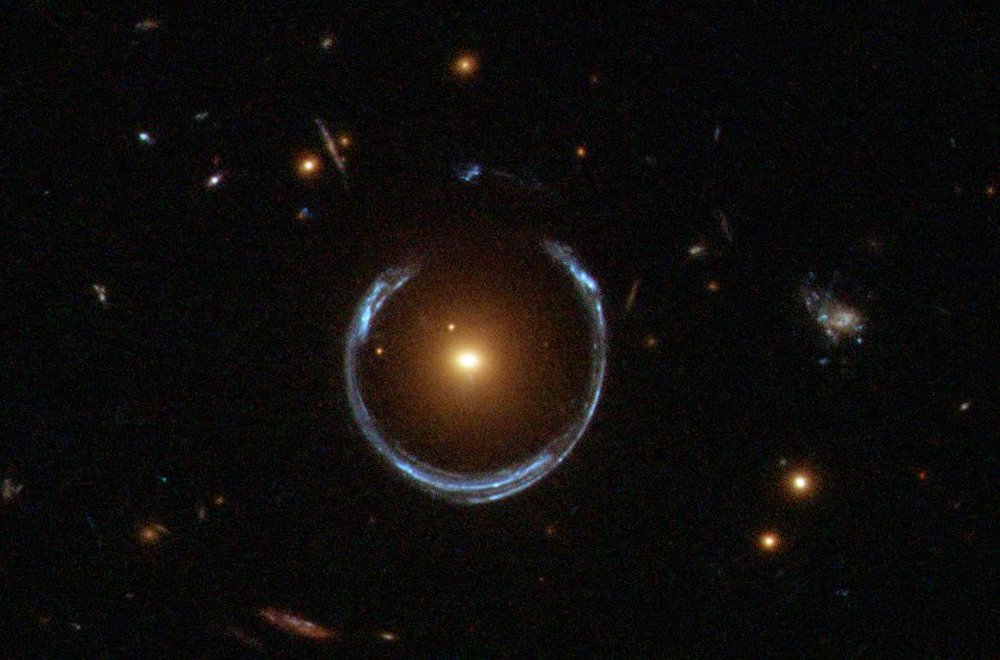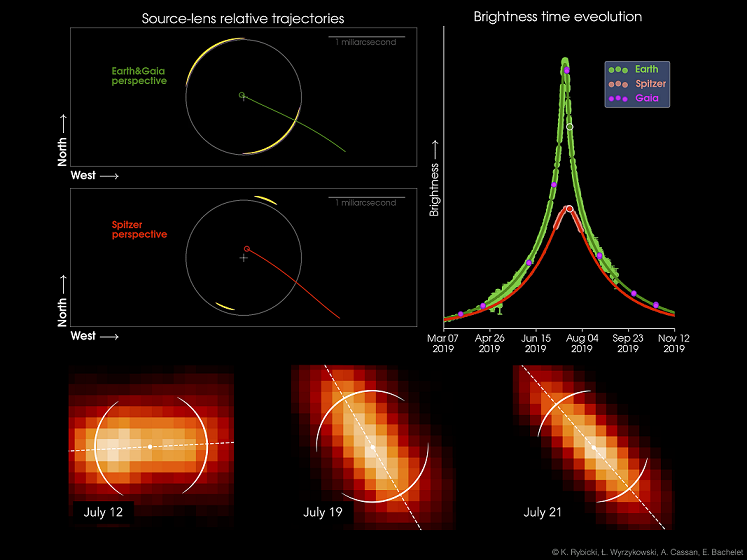
How to weigh an invisible object?
Researchers from the University of Warsaw, in collaboration with astronomers from around the world, including mgr Przemysław Mikołajczyk, a postgraduate student of the Institute of Astronomy of the University of Wrocław, registered a gravitational microlensing phenomenon near the Milky Way plane. This phenomenon had been first noted on the 19th of April 2019 in data sent by the Gaia satellite (European Space Agency – ESA) that cyclically scans the whole sky in order to make precise measurements of the location, movement, and brightness of stars in our galaxy. The brightening had been named Gaia19bld, and then astronomers from the entire world (including amateur astronomers) observed the phenomenon for the next 12 months. The results of their work have been published in the paper titled Single-lens mass measurement in the high-magnification microlensing event Gaia19bld located in the Galactic disc by Rybicki et al. 2022, Astronomy & Astrophysics, 657, A18.
Thanks to data from ground observatories (from the 8-meter telescopes belonging to the European Southern Observatory – ESO, through the Chilean OGLE review telescope belonging to the Astronomical Observatory of the University of Warsaw, to small robotic telescopes with an aperture of 30 cm or so operated by amateurs), as well as observations from the Spitzer Space Telescope (NASA), the researchers managed to measure changes in the structure of images of the light source (star) in the phenomenon of microlensing. Movement, image rotation, and separation of source and lens during such a phenomenon, although very well defined theoretically, were observed directly for the first time. It was made possible by applying the optical interferometry technique, using the VLT telescopes located at the Paranal Observatory in Chile.

The mass of the lens, an invisible object that only amplifies the source light during microlensing, was determined with remarkable accuracy. It was determined to be (1.13 ± 0.03) the mass of the Sun. The lens may be a regular star, but also a much more exotic object, such as a neutron star or a black hole. In a few years, when the lens and the source move far enough apart in the sky that their images can be separated, we will find out how it is in reality. Nevertheless, studies on the Gaia19bld show that it is possible to precisely “weigh” objects that we cannot see. It provides an excellent weapon in the search of black holes of stellar and intermediate masses, quietly drifting in the Milky Way. The engagement of many observers and coordination of their observations provides and will provide in the future excellent light curves and will doubtlessly yield many fascinating discoveries.
The (micro)lensing phenomenon is predicted by the General Relativity Theory formulated by Albert Einstein nearly 100 years ago. It is worth mentioning that a huge contribution to the development of microlensing theory was made by Polish astronomer Professor Bohdan Paczynski, a graduate of the University of Warsaw. He was also a proponent of organizing sky surveys to search for microlensing phenomena, such as OGLE (Optical Gravitational Lensing Experiment, OA UW).
Więcej informacji:
-
Publication by Rybicki K. A. et al. „Single-lens mass measurement in the high-magnification microlensing event Gaia19bld located in the Galactic disc„, Astronomy & Astrophysics, 657, A18 (2022)
-
How to weigh an invisible object (press-release A&A)
-
LCO Scientists Confirm the Discovery of the First Moving Microlensing Arcs
-
How to weigh an invisible object? (UW)
Added by: Joanna Molenda-Żakowicz
Dean’s representative for faculty promotion and media relations
